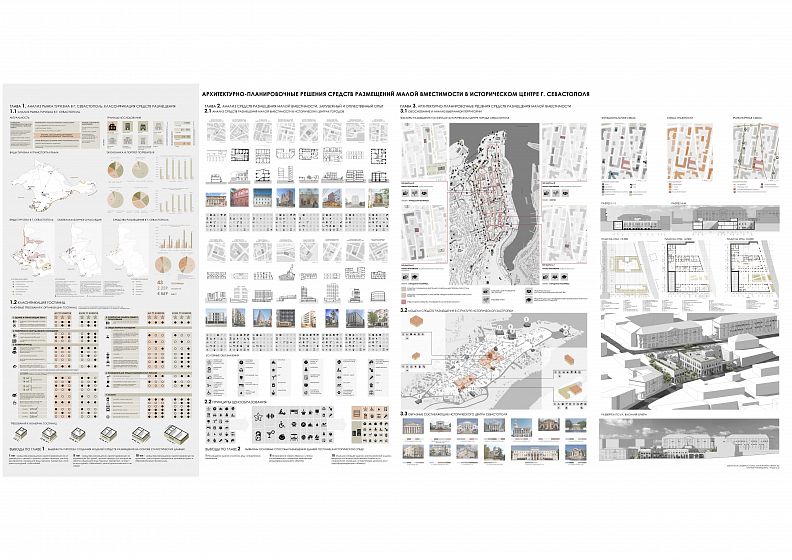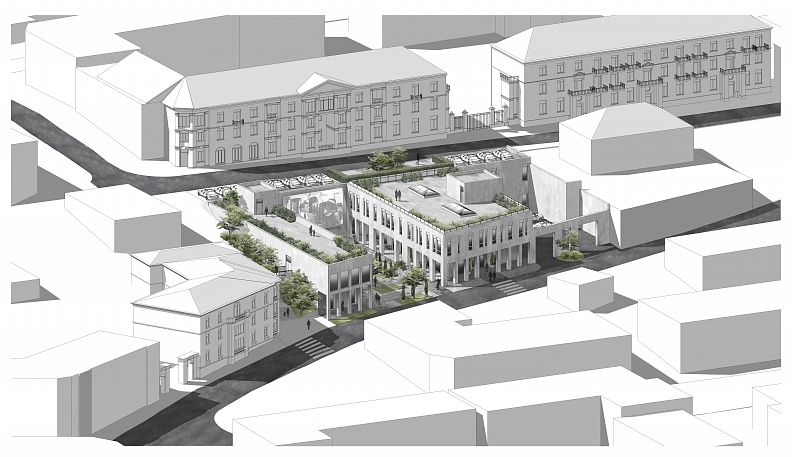Architectural and planning solutions for small-capacity hotels in the historical center of the city of Sevastopol.

Project idea
Creating a model of complementary hotels
Project description
The aim of this work was to create a model for the interaction of hotels through pedestrian accessibility and functional content. The study analyzes small-capacity hotels located in historic city centers. For each hotel, a map of a set of functions was drawn up, in accordance with which a factor analysis of the dependence of the price for a standard double room on the set of services was carried out. Using the selection method, the most significant characteristics and functions of the hotel were identified. They turned out to be: stardom, rooms, availability of a fitness center, spa, availability of facilities for people with limited mobility, availability of services for babysitting, availability of coworking space, accommodation with animals, and so on. As a result, the results were divided into those that relate to the body of the building and those that could be located on the territory of the hotel or within walking distance. Due to the fact that some functions could be within walking distance, the price for a room in the historic center could be reduced. Moreover, this function could be located in a nearby hotel.
In addition, another proposal for reducing the price for a room is to provide an opportunity for local residents to use the hotel's functionality in order to fill the missing social needs.
The result of the work was a model of complementary hotels that are located within walking distance from each other and could interact with each other by providing each other with services such as fitness, conference room, coworking, or staff.
Technical information
The result of the thesis was a hotel located in the historical center of Sevastopol with 9 rooms, on the territory of which there is a bar, restaurant, coworking, conference hall and fitness



